Category Archives: Machine Learning
Generative Adversarial Network (GAN): Concepts, Examples

In this post, you will learn concepts & examples of generative adversarial network (GAN). The idea is to put together key concepts & some of the interesting examples from across the industry to get a perspective on what problems can be solved using GAN. As a data scientist or machine learning engineer, it would be imperative upon us to understand the GAN concepts in a great manner to apply the same to solve real-world problems. This is where GAN network examples will prove to be helpful. What is Generative Adversarial Network (GAN)? We will try and understand the concepts of GAN with the help of a real-life example. Imagine that …
K-Means Clustering Concepts & Python Example
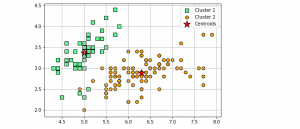
Clustering is a popular unsupervised machine learning technique used in data analysis to group similar data points together. The K-Means clustering algorithm is one of the most commonly used clustering algorithms due to its simplicity, efficiency, and effectiveness on a wide range of datasets. In K-Means clustering, the goal is to divide a given dataset into K clusters, where each data point belongs to the cluster with the nearest mean value. The algorithm works by iteratively updating the cluster centroids until convergence is achieved. In this post, you will learn about K-Means clustering concepts with the help of fitting a K-Means model using Python Sklearn KMeans clustering implementation. You will …
Data Science & Big Data Career Paths
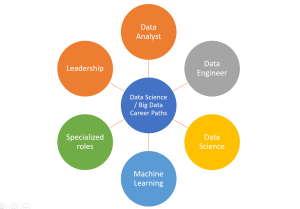
Navigating the world of data science can be as complex as the data sets that these professionals work with. As the field continues to evolve at a rapid pace, the array of job roles and career paths have expanded, encompassing a multitude of specializations ranging from Data Analysts and Machine Learning Engineers to Data Scientists. This dynamic landscape offers a wealth of opportunities, but it can also create confusion for those looking to embark on or advance their careers in data science. In this blog, we aim to demystify these career paths in data science, offering clarity on the progression of roles, responsibilities, and skills needed for each. Whether you …
Dynamic Pricing & Machine Learning: Strategies, Examples
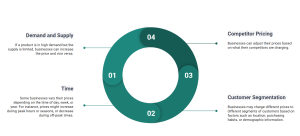
Are you a product manager looking to maximize profits and improve product performance, or a data scientist eager to leverage the power of machine learning to solve complex business problems related to dynamic pricing? Do you ever wonder how businesses can optimize their pricing strategies to stay competitive, cater to customer expectations, and enhance their market positioning? In this blog, we uncover the intersection of advanced AI technologies with smart pricing strategies. In an era where customer expectations, market trends, and competitor actions change rapidly, businesses need an agile and data-driven approach to pricing. That’s where dynamic pricing coupled with machine learning comes into play. We’ll explore compelling strategies, reveal …
Machine Learning Use Cases in Finance: Concepts & Examples

What if we can build solutions that could predict financial market trends, assess credit risk with unerring precision, detect fraudulent activities before they occur, and significantly automate your day-to-day operations? Such solutions can be called as predictive analytics solutions which leverages AI / machine learning for making predictions. Machine learning has found its way into finance and is being used in various ways to improve the industry. Finance has always been a data-driven industry, and in recent years, machine learning has become an increasingly important tool for making sense of that data. In this blog post, we will explore some of these use cases and explain how machine learning is …
Weighted Regression Model Python Examples
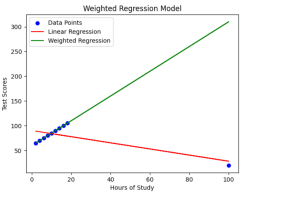
Have you ever wondered how regression models can be enhanced to provide more accurate predictions, even in the presence of outliers or data points with varying significance? Enter weighted regression machine learning models, an approach that assigns weights to data points, allowing for precise adjustments and improvements in prediction accuracy. In this blog post, we will learn about the concepts of weighted regression models with the help of examples while demonstrating with the help of Python implementation. Traditional linear regression is a widely-used technique, but it may struggle when faced with outliers or situations where some data points carry more weight than others. However, weighted regression models help overcome these …
Heteroskedasticity in Regression Models: Examples
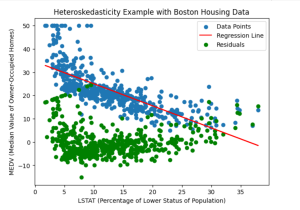
Have you ever encountered data that exhibits varying patterns of dispersion and wondered how it might impact your regression models? The varying patterns of dispersion represents the essence of heteroskedasticity – the phenomenon where the spread or variability of the residuals / errors in a regression model changes across different levels or values of the independent variables. As data scientists, understanding the concept of heteroskedasticity is crucial for robust and accurate analyses. In this blog, we delve into the intriguing world of heteroskedasticity in regression models and explore its implications through real-world examples. What’s heteroskedasticity and why learn this concept? Heteroskedasticity refers to a statistical phenomenon observed in regression analysis, …
Underwriting & Machine Learning Models Examples
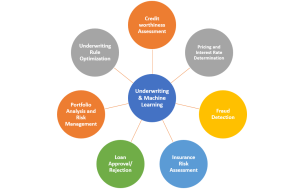
Are you curious about how AI / machine learning is revolutionizing the underwriting process? Have you ever wondered how machine learning models are reshaping risk assessment and decision-making in industries like insurance, lending, and securities? Underwriting has long been a critical process for assessing risks and making informed decisions, but with the advent of machine learning, the possibilities have expanded exponentially. By harnessing the immense capabilities of machine learning algorithms and the abundance of data available, organizations can extract actionable insights, achieve higher accuracy, and streamline their underwriting practices like never before. In this blog, we will learn about how machine learning models can be used effectively for underwriting processes, …
Loan Eligibility / Approval & Machine Learning: Examples

It is no secret that the loan industry is a multi-billion dollar industry. Lenders make money by charging interest on loans, and borrowers want to get the best loan terms possible. In order to qualify for a loan, borrowers are typically required to provide information about their income, assets, and credit score. This process can be time consuming and frustrating for both lenders and borrowers. In this blog post, we will discuss how AI / machine learning can be used to predict loan eligibility. As data scientists, it is of great importance to understand some of challenges in relation to loan eligibility and how machine learning models can be built …
Credit Risk Modeling & Machine Learning Use Cases

Have you ever wondered how banks and financial institutions decide who to lend money to, or how much to lend? The secret lies in credit risk modeling, a sophisticated approach that evaluates the likelihood of a borrower defaulting on their loan. Through in-depth analysis of historical data and borrower’s credit behavior, these models play a pivotal role in guiding lending decisions, managing risks, and ultimately, driving profitability. In the face of growing financial complexities, traditional methods are often insufficient. That’s where machine learning comes into play that helps better anticipate credit risk. By automating the identification of patterns within data, patterns that often go unnoticed by human analysis, machine learning …
One-hot Encoding Concepts & Python Examples
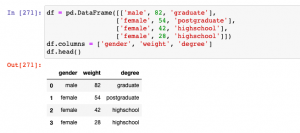
Have you ever encountered categorical variables in your data analysis or machine learning projects? These variables represent discrete qualities or characteristics, such as colors, genders, or types of products. While numerical variables can be directly used as inputs for machine learning algorithms, categorical variables require a different approach. One common technique used to convert categorical variables into a numerical representation is called one-hot encoding, also known as dummy encoding. When working with machine learning algorithms, categorical variables need to be transformed into a numerical representation to be effectively used as inputs. This is where one-hot encoding comes to rescue. In this post, you will learn about One-hot Encoding concepts and …
Ridge Regression Concepts & Python example
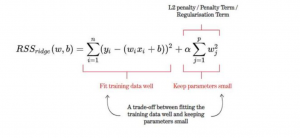
Ridge regression is a type of linear regression that penalizes ridge coefficients. This technique can be used to reduce the effects of multicollinearity in ridge regression, which may result from high correlations among predictors or between predictors and independent variables. In this tutorial, we will explain ridge regression with a Python example. What is Ridge Regression? Ridge regression is a powerful technique in machine learning that addresses the issue of overfitting in linear models. In linear regression, we aim to model the relationship between a response variable and one or more predictor variables. However, when there are multiple variables that are highly correlated, the model can become too complex and …
Bayesian Machine Learning Applications Examples
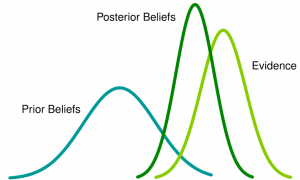
Have you ever wondered how machines can make decisions with uncertainty? What if there was an approach in machine learning that not only learned from data but also quantified and managed uncertainty in a principled way? Enter the realm of Bayesian machine learning. Bayesian machine learning is one of the most powerful modeling technique in predictive analytics. It marries the probabilistic reasoning with machine learning algorithms. Bayes’ theorem, which was first introduced by Reverend Thomas Bayes in 1763, provides a way to infer probabilities from observations. Bayesian machine learning has become increasingly popular because it can be used for real-world applications such as spam filtering (NLP), credit card fraud detection, …
Azure Machine Learning Studio: Getting Started
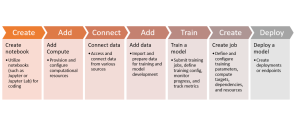
Azure Machine Learning Studio is a powerful cloud-based platform that brings the world of machine learning to your fingertips. Whether you’re a data scientist, a developer, or a business professional, Azure Machine Learning Studio provides a user-friendly and collaborative environment to build, train, and deploy machine learning models with ease. This blog post serves as a quick tutorial to help you get started with Azure Machine Learning Studio. From setting up your workspace to exploring key features and best practices, we will walk you through the essential steps to embark on your machine learning journey. Azure ML Studio – Machine Learning Pipeline Before we can proceed with the tasks in …
Machine Learning NPTEL Online Courses List 2023
Machine learning is a rapidly evolving field that has gained immense popularity in recent years. As technology continues to advance, the demand for professionals with expertise in machine learning continues to soar. If you’re someone who is interested in diving deep into the world of machine learning or looking to enhance your existing knowledge, the NPTel courses are an excellent avenue to explore. The National Programme on Technology Enhanced Learning (NPTel) is a joint initiative by the Indian Institutes of Technology (IITs) and the Indian Institute of Science (IISc). It offers a wide range of online courses across various disciplines, including computer science and engineering. In this blog, we will …
Binomial Distribution Explained with Examples
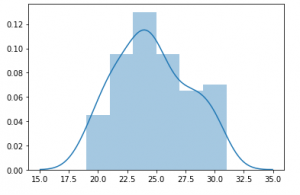
Have you ever wondered how to predict the number of successes in a series of independent trials? Or perhaps you’ve been curious about the probability of achieving a specific outcome in a sequence of yes-or-no questions. If so, we are essentially talking about the binomial distribution. It’s important for data scientists to understand this concept as binomials are used often in business applications. The binomial distribution is a discrete probability distribution that applies to binomial experiments (experiments with binary outcomes). It’s the number of successes in a specific number of trials. Sighting a simple yet real-life example, the binomial distribution may be imagined as the probability distribution of a number …
I found it very helpful. However the differences are not too understandable for me